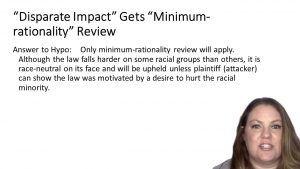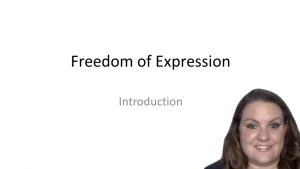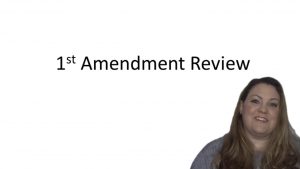Lessons
1. Introduction to Constitutional Law
2. Separation of Powers and Congressional Powers
3. Commerce Clause
4. State Action Limitation
5. Equal Protection Clause of the 14th Amendment
6. The Due Process Clause of the 14th Amendment
7. Privileges and Immunities Clause
8. Full Faith and Credit
9. Freedom of Expression
10. Freedom of Religion: Free Exercise Clause
11. Contracts Clause, Ex Post Facto, and Bill of Attainder
View Index
Confirm favorite deletion?
Cancel
Yes, Delete
Introduction to Separation of Powers and Congressional Powers
In this video, you should consider the following:
- The distinct as well as potentially overlapping powers between the three branches of government.
- Congress holds the purse strings, which means they have the power to tax and spend.
- Only Congress can officially declare war.

Delivered by:Professor Melissa A. Hale
Video Takeaway: Introduction to Separation of Powers and Congressional Powers
Topic Quizzes
Multiple Choice Quiz
- Introduction to Separation of Powers and Congressional Powers (A)
- Introduction to Separation of Powers and Congressional Powers (B)
- Introduction to Separation of Powers and Congressional Powers (C)
- Introduction to Separation of Powers and Congressional Powers (D)
- Introduction to Separation of Powers and Congressional Powers (E)
- Introduction to Separation of Powers and Congressional Powers (F)
- Introduction to Separation of Powers and Congressional Powers (G)
Topic Quizzes
Topic Quizzes
Multiple Choice Quiz
- Introduction to Separation of Powers and Congressional Powers (A)
- Introduction to Separation of Powers and Congressional Powers (B)
- Introduction to Separation of Powers and Congressional Powers (C)
- Introduction to Separation of Powers and Congressional Powers (D)
- Introduction to Separation of Powers and Congressional Powers (E)
- Introduction to Separation of Powers and Congressional Powers (F)
- Introduction to Separation of Powers and Congressional Powers (G)






















